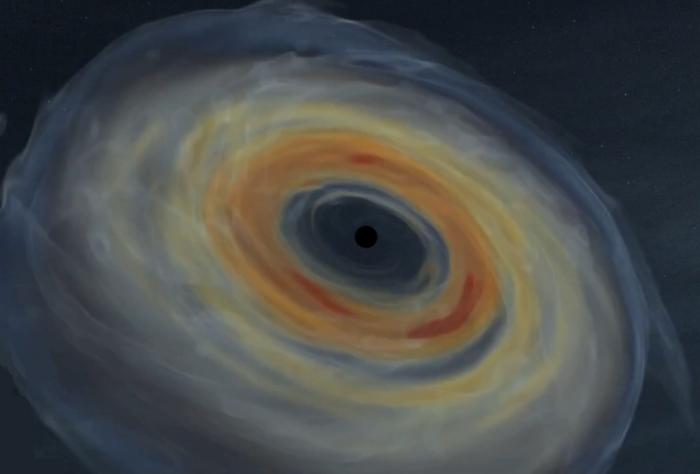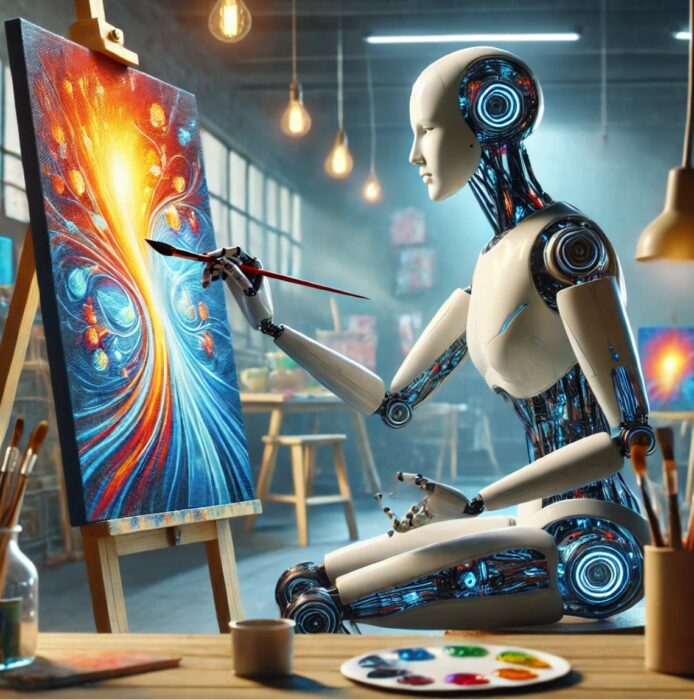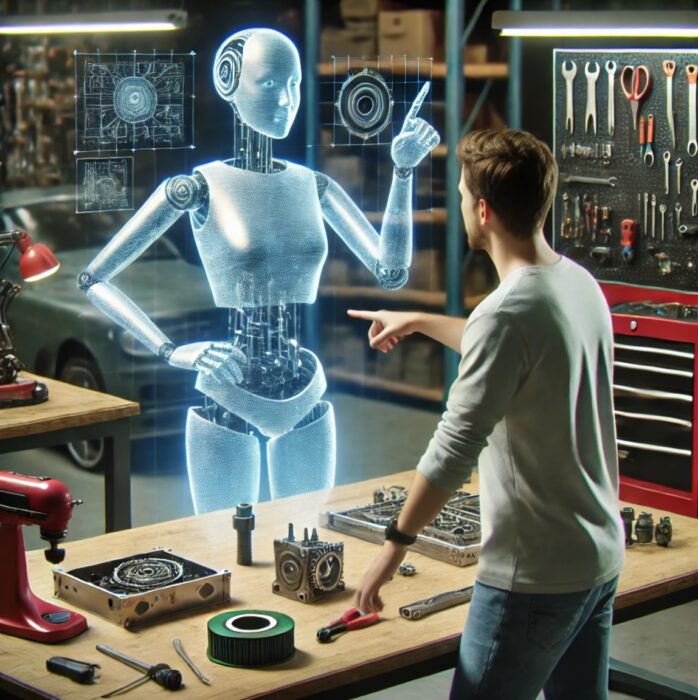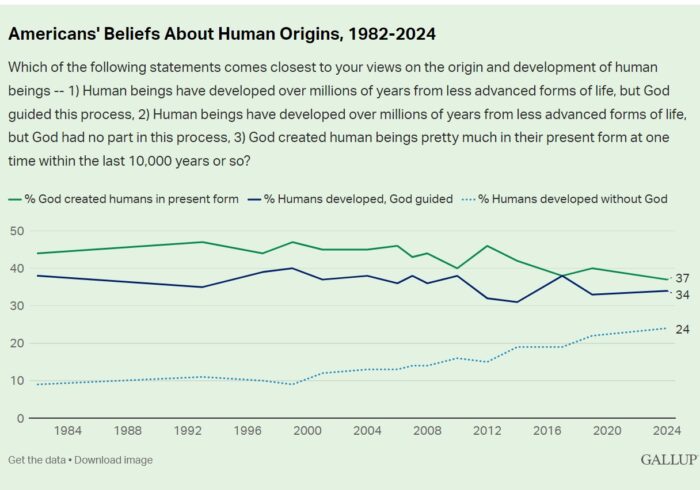 Solar power is on the upswing. In 2023, 407–446 GW of solar power was installed globally, bringing the total to 1.6 TWdc. To put this into perspective, this was 55% of new power capacity added to energy production. For the first time, a renewable energy source contributed the most to new capacity. In 2024 so far solar is 75% of new capacity. In the US this was 60% of new power generation (capacity is the potential to make energy at any given time, while generation or production is the actual energy produced). In 2023 solar made up 5.5% of world energy production.
Solar power is on the upswing. In 2023, 407–446 GW of solar power was installed globally, bringing the total to 1.6 TWdc. To put this into perspective, this was 55% of new power capacity added to energy production. For the first time, a renewable energy source contributed the most to new capacity. In 2024 so far solar is 75% of new capacity. In the US this was 60% of new power generation (capacity is the potential to make energy at any given time, while generation or production is the actual energy produced). In 2023 solar made up 5.5% of world energy production.
The reason for the increase in solar is that it’s the cheapest form of new energy. According to the International Energy Agency (IEA), solar electricity costs $30–60/MWh in Europe and the US, and $20–40/MWh in China and India. Solar is also the safest, with the fewest numbers of deaths per TWh produced (0.02, compared to the worst, 32.72 for brown coal). Because solar is clean and environmentally friendly, making solar cheaper and more efficient will only enhance its advantages. As is often discussed here, there are other considerations to the overall strategy of energy production, such as intermittency, grid storage, and grid upgrades, but we are not close, at least globally, to running into significant issues. We can take solar from the current 5.5% to at least 30% without too much issue, and can push higher with some infrastructure investment.
Along the lines of making solar power better and cheaper – let’s talk about Luminescent Solar Concentrators (LSCs). If we want to make solar power more efficient there are a few approaches. We could make the conversion of photons to electrons (the photovoltaic effect) more efficient. Right now commercial silicon solar panels have an efficiency of 22-24%, which is pretty good. The theoretical limit of silicon is about 29%, and newer materials, like perovskite, have an even higher potential efficiency.
Another approach is to have some kind of layered solar panel, where each layer may have efficiencies in the 20% range but the different layers have different peak efficiencies in terms of wavelength (color) of light, and there are multiple chances for each photon to be absorbed and converted into energy. Yet another approach is a solar collector – bringing more photons to the photovoltaic cell. Mirrors, for example, are an efficient way of redirecting light to a photovoltaic cell.
LSCs are a method of solar concentration. They use luminescent material to absorb light and then re-emit that light (luminesce). This has several advantages. First, LSCs are efficient at collective diffuse light. Solar panels work best with direct light, and the more direct the better. This is why there is a huge advantage to orienting a panel toward the sun, and for large installations even following the sun with movable panels. But LSCs don’t care – they can collect diffuse or scattered light from any direction with equal efficiency. They can then re-emit that light at a specific wavelength (color), and that light can be directed through a process called total internal reflection. This is like a fiber optic cable, where all light that hits the interface at the surface of the cable is reflected internally, so it travels down the cable and never leaves it.
What this means is that you can have a system of LSCs that are arranged to gather diffuse or direct light from any direction. These LSCs then give off light which travels down a fiber to a photovoltaic where the light is made into electricity. The LSCs are semi-transparent and can be of different colors. If you are thinking of a frond of leaf-like LSCs, then you are on the right track. LSCs are like leaves, and they can be arranged just like leaves, connecting to central fibers and brining energy to the photovoltaic device. In fact, trees have evolved to have a very efficient arrangement of leaves. They absorb light, but also scatter light so that it can be collected by other leaves.
LSCs can already be cost effective, compared to solar panels. They are cheaper to make – mostly just glass or plastic with a luminescent covering. PVs, by contrast, are relatively expensive for the same surface area. So it is more cost effective to have cheap LSCs covering a wide area and bringing light to the more expensive PVs. They also avoid the need for expensive tracking systems. Further, they can be made to be more modular, easier to upgrade and replace. The cost competitiveness improved further with larger area covered, and greater variability in light intensity and scattering.
LSCs are still on the steep part of the technology curve. A recent study presents ways to make them even more efficient, by reducing the size of each LSC and bunching them in a leaf-like structure. The hope is that this approach will make LSCs more scalable, cost effective, and efficient. There already is an LSC industry, but it is small compared to the PV industry. We may, however, be getting close to a shift.
It’s possible that in the future we will not have large fields of solar panels tracking the sun and collecting energy, but fields of artificial trees covered with leaf-like LSCs collecting sunlight and directing it down to their trunks where PVs turn the photons into energy.
 The state of modern science and technology is truly amazing, much more so than the fake stuff that people like to spread around. Gravitational waves have opened up an entirely new type of astronomy, a way to explore the universe through very subtle ripples in spacetime produce by powerful gravitational events. Einstein predicted the existence of gravitational waves in 1916, but it took decades to develop the technology to actually detect them. Their existence was inferred from neutron star observations in 1974, but they were not directly detected until 2015, almost a century after their prediction.
The state of modern science and technology is truly amazing, much more so than the fake stuff that people like to spread around. Gravitational waves have opened up an entirely new type of astronomy, a way to explore the universe through very subtle ripples in spacetime produce by powerful gravitational events. Einstein predicted the existence of gravitational waves in 1916, but it took decades to develop the technology to actually detect them. Their existence was inferred from neutron star observations in 1974, but they were not directly detected until 2015, almost a century after their prediction.
 It’s been less than two years (November 2022) since ChatGPT launched. In some ways the new large language model (LLM) type of artificial intelligence (AI) applications have been on the steep part of the improvement curve. And yet, they are still LLMs with the same limitations. In the last two years I have frequently used ChatGPT and other AI applications, and often give them tasks just to see how they are doing.
It’s been less than two years (November 2022) since ChatGPT launched. In some ways the new large language model (LLM) type of artificial intelligence (AI) applications have been on the steep part of the improvement curve. And yet, they are still LLMs with the same limitations. In the last two years I have frequently used ChatGPT and other AI applications, and often give them tasks just to see how they are doing. Solar power is on the upswing. In 2023, 407–446 GW of solar power was installed globally, bringing the total to 1.6 TWdc. To put this into perspective, this was 55% of new power capacity added to energy production. For the first time, a renewable energy source contributed the most to new capacity. In 2024 so far solar is 75% of new capacity. In the US this was 60% of new power generation (capacity is the potential to make energy at any given time, while generation or production is the actual energy produced). In 2023 solar made up 5.5% of world energy production.
Solar power is on the upswing. In 2023, 407–446 GW of solar power was installed globally, bringing the total to 1.6 TWdc. To put this into perspective, this was 55% of new power capacity added to energy production. For the first time, a renewable energy source contributed the most to new capacity. In 2024 so far solar is 75% of new capacity. In the US this was 60% of new power generation (capacity is the potential to make energy at any given time, while generation or production is the actual energy produced). In 2023 solar made up 5.5% of world energy production. When we talk publicly about the effects of human activity on the climate should we refer to “global warming”, “climate change”, the “climate crisis” or to “climate justice”? Perhaps we should also be more technical and say specifically, “anthropogenic climate change”. This kind of question is often referred to as “framing”, meaning that we need to be thoughtful about how we frame topics for science communication and open discussion.
When we talk publicly about the effects of human activity on the climate should we refer to “global warming”, “climate change”, the “climate crisis” or to “climate justice”? Perhaps we should also be more technical and say specifically, “anthropogenic climate change”. This kind of question is often referred to as “framing”, meaning that we need to be thoughtful about how we frame topics for science communication and open discussion. The cultural effects of the COVID pandemic can still be felt reverberating through society. One of the positive effects, in my opinion, was the sudden boost to remote technology – connecting remotely for meetings and other uses through Zoom or a similar application. This development has been a little controversial, but I think on the whole has been a net positive, especially as we move into the era of voluntary remote connections and hybrid meetings.
The cultural effects of the COVID pandemic can still be felt reverberating through society. One of the positive effects, in my opinion, was the sudden boost to remote technology – connecting remotely for meetings and other uses through Zoom or a similar application. This development has been a little controversial, but I think on the whole has been a net positive, especially as we move into the era of voluntary remote connections and hybrid meetings. Both Lin Yu-ting of Taiwan and Imane Khelif of Algeria earned medals in female boxing competition at the 2024 Olympics. This has caused a controversy because both boxers,
Both Lin Yu-ting of Taiwan and Imane Khelif of Algeria earned medals in female boxing competition at the 2024 Olympics. This has caused a controversy because both boxers,  About half of Americans, when asked, report that they
About half of Americans, when asked, report that they  Let me start out by saying that I think the answer to that question is no – but this requires lots of clarification. This was, however,
Let me start out by saying that I think the answer to that question is no – but this requires lots of clarification. This was, however,  The topic of genetically modified organisms (GMOs) is a great target for science communication because public attitudes have largely been shaped by deliberate misinformation, and the research suggests that those attitudes can change in response to more accurate information. It is the topic where the disconnect between scientists and the public is the greatest, and it is the most amenable to change.
The topic of genetically modified organisms (GMOs) is a great target for science communication because public attitudes have largely been shaped by deliberate misinformation, and the research suggests that those attitudes can change in response to more accurate information. It is the topic where the disconnect between scientists and the public is the greatest, and it is the most amenable to change. Surveys are always tricky because how you ask a question can have a dramatic impact on how people answer. But it is useful to ask the exact same question over a long period of time, because that can indicate how public attitudes are changing. This is one of the benefits of
Surveys are always tricky because how you ask a question can have a dramatic impact on how people answer. But it is useful to ask the exact same question over a long period of time, because that can indicate how public attitudes are changing. This is one of the benefits of 




